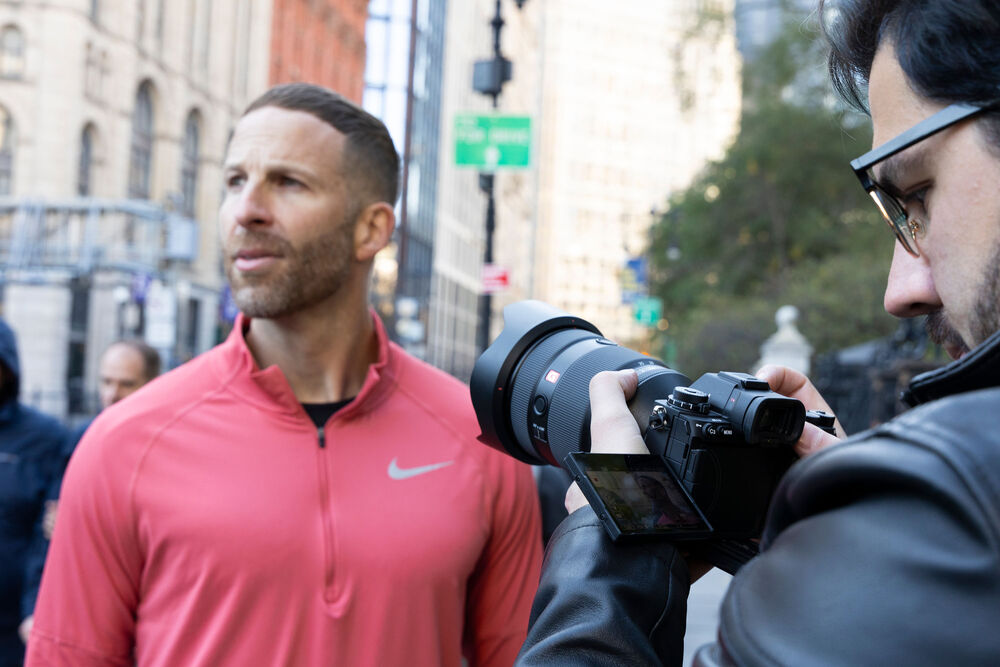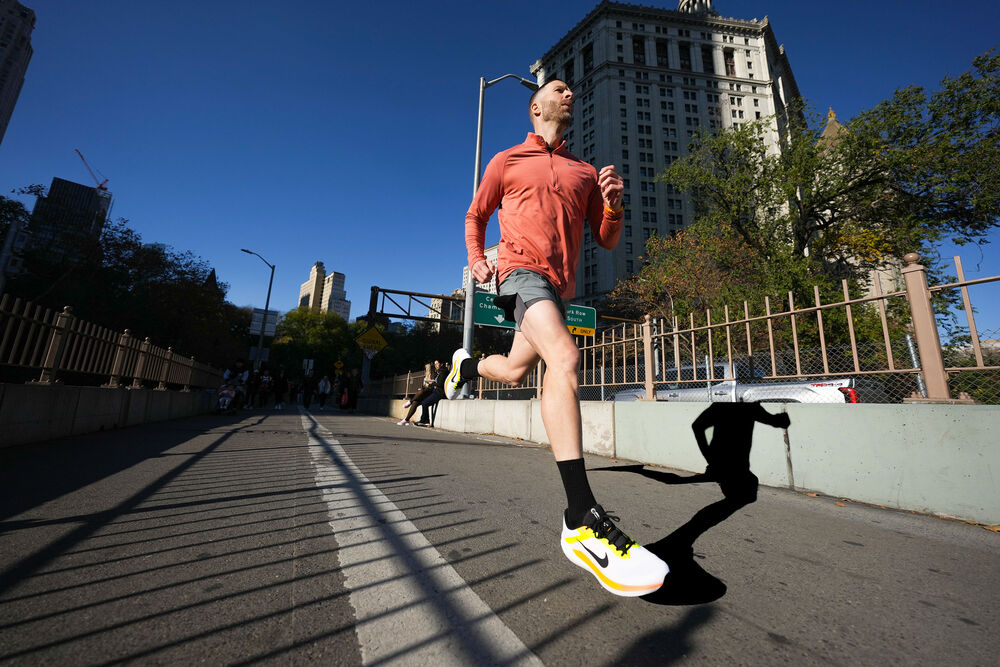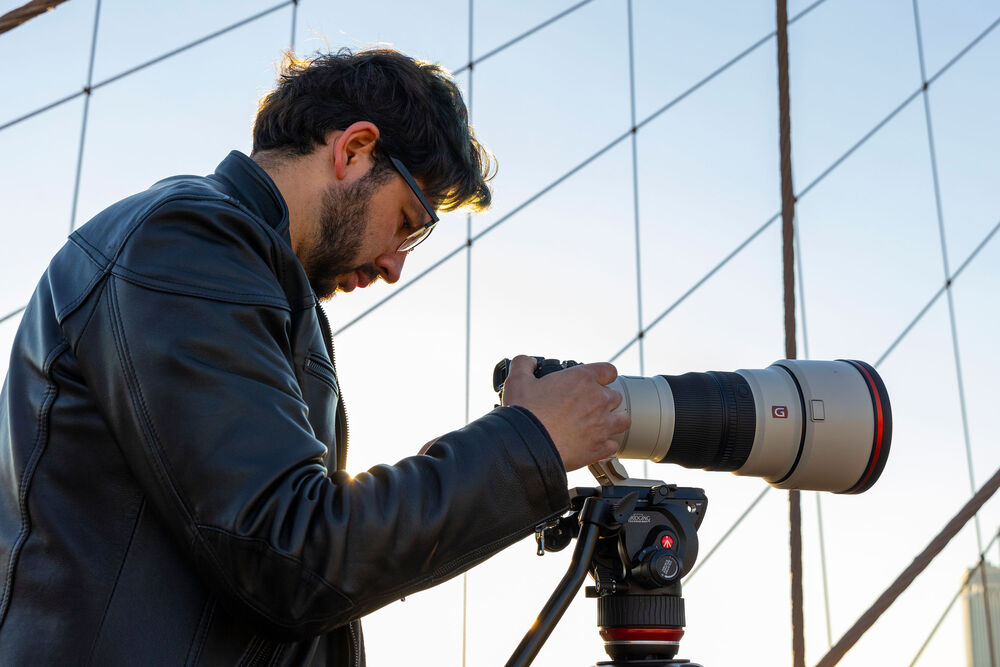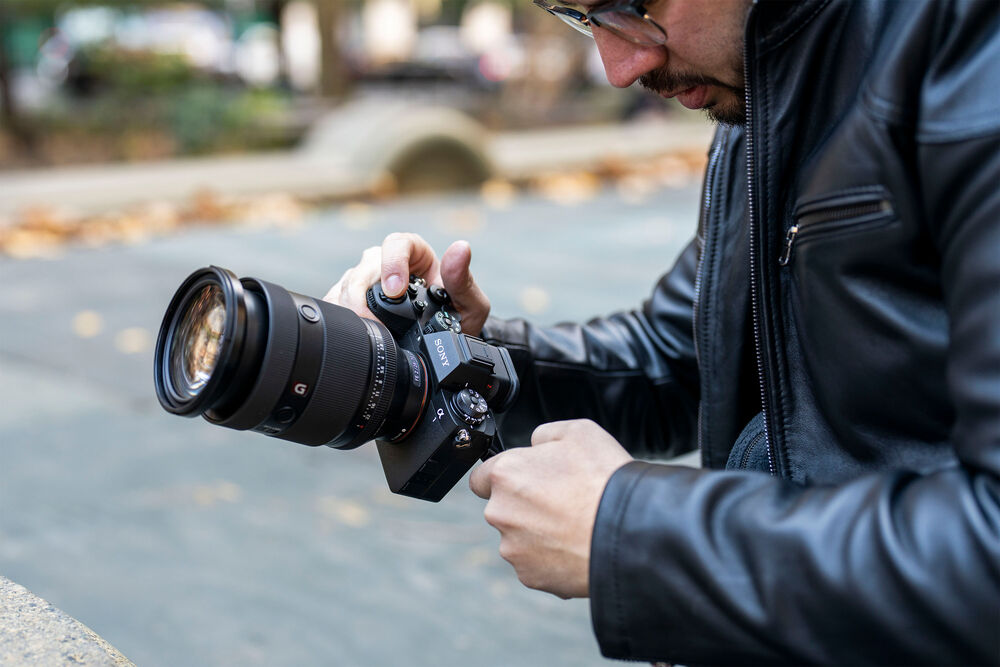

Key Features
The Sony a1 II is their most versatile camera yet offering the best overall mixture of speed, video capabilities, high-resolution stills, and a robust, professional-worthy body design. It pulls much of the original a1's well-rounded feature-set into an a9 III body and adds the AF and IBIS technologies introduced with the a7R V. It's a camera meant for working professionals, whether their sports, editorial, product, fashion, or advertising shooters, and it's equally appealing to landscape, portrait, wedding, and event photographers, too. And, beyond photography, it has the video tools the a1-series is known for, including 8K recording, along with useful stabilization and framing aids borrowed from the ZV class of cameras.
The a1 II brings Sony's best technology from every lineup into one all-encompassing camera body making it the do anything camera solution for professionals.
Upgraded Features and Functions

The original a1 was a standout camera within Sony's lineup, meshing high-end photo and high-end video features within a single, powerful camera body. Version two takes this theme and runs with it, improving on a number of key features to further benefit the professional hybrid image-maker.
Sensor and Processing Improvements

The original a1 was already known for its strong imaging performance and the a1 II improves on this with upgraded BIONZ XR processing, an AI processing unit, more powerful 8.5-stop IBIS, and the impressive 50MP stacked BSI CMOS sensor from its predecessor. The sensor and processor still afford a top 30-fps shooting rate, expandable sensitivity from ISO 50-102400, and an impressive 15-stop dynamic range. Additionally, on the speed front, the a1 II gains the Pre-Capture and Speed Boost functions that debuted on the a9 III.

Smarter, Faster Autofocus and Subject Tracking

The a1 II's focusing system received similarly significant upgrades from its predecessor, now sporting an AI Processing Unit and refined subject detection and tracking. The phase-detection AF system itself still comprises 759 points, which cover about 92% of the sensor area, and support focusing down to -4 EV at f/2. Subject tracking and subject detection is improved, too, specifically how the camera is 30% faster at detect human eyes and 50% faster with animal eyes.
Alpha's Alpha in Video Capabilities

The core video specs of the original a1 were ahead of their time, and in many ways, still are. The a1 II keeps many of the core resolutions and frame rates but refines the video recording capabilities with more supportive modes and features, including access to Dynamic Area Stabilization and support for a true 24.00 frame rate for a cinematic look and timecode input with optional adapter. This makes the a1 II just as capable on a professional film set as it is in a photography studio.
Pre-Capture & Speed Boost-Never Miss a Moment
Along with the key technology delivered by the sensor, the a1 II brings additional features to unlock the camera's full potential.
Professional Body Design and Connectivity
The a1-series has always been a top-of-the-line model for Sony and, as such, had one of the most durable and refined physical designs within the system. The a1 II, though, gains a bit of an upgrade to bring it in line with the a9 III in terms of button layout, screen and EVF implementation, and durability. It's a camera built for professional use and has the strongest, most reliable design in Sony's lineup.

Versatile and Durable Design
Tru-Finder EVF and Tilting Touchscreen LCD
Enhanced Functionality and Usability
Sony has continued to improve the workflows of their professional cameras with upgraded and additional features:
Composite Shooting Modes
By capturing multiple images and combining them in post-production, users can achieve image quality and resolutions not possible with just the core sensor technology. The a1 II offers two different options for composite shooting:
Key Specs
| Lens Mount | Sony E |
| Sensor Resolution | Actual: 50.5 Megapixel |
| Image Sensor | 35.9 x 24 mm (Full-Frame) Stacked CMOS |
| Image Stabilization | Sensor-Shift, 5-Axis |
| ISO Sensitivity Range | Photo |
| Internal Recording Modes | H.264/XAVC S 4:2:2 10-Bit |
| External Recording Modes | 4:2:0 8-Bit via HDMI |
| Media/Memory Card Slot | Dual Slot: CFexpress Type A / SD (UHS-II) |
| Video I/O | 1x HDMI Output |
| Audio I/O | 1x 1/8" / 3.5 mm TRS Stereo Headphone Output |
| Power I/O | 1x USB-C Input |
| Other I/O | 1x RJ45 Data Output |
| Wireless | 2.4 / 5 GHz Wi-Fi 5 (802.11ac), Bluetooth 5.0 |
| Display Type | 4-Axis Tilting Touchscreen LCD |
| Battery Type | 1x NP-FZ100 Rechargeable Lithium-Ion, 7.2 VDC, 2280 mAh (Approx. 420 Shots) |
Imaging
| Lens Mount | Sony E |
| Sensor Resolution | Actual: 50.5 Megapixel |
| Image Sensor | 35.9 x 24 mm (Full-Frame) Stacked CMOS |
| Sensor Crop (35mm Equivalent) | Crop Factor: 1x |
| Image Stabilization | Sensor-Shift, 5-Axis |
| Built-In ND Filter | No |
| Capture Type | Stills & Video |
Exposure Control
| Shutter Type | Mechanical Focal Plane Shutter and Electronic Rolling Shutter |
| Shutter Speed | Mechanical Shutter |
| Bulb/Time Mode | Bulb Mode |
| ISO Sensitivity Range | Photo |
| Metering Method | Average, Center-Weighted Average, Highlight Weighted, Multi, Spot |
| Exposure Modes | Aperture Priority, Auto, Manual, Program, Shutter Priority |
| Exposure Compensation | -5 to +5 EV (1/3, 1/2 EV Steps) |
| Metering Range | -3 to 20 EV |
| White Balance | 2500 to 9900K |
| Continuous Shooting | Up to 30 fps at Maximum Resolution for up to 240 Frames (Raw) / 400 Frames (JPEG) |
| Interval Recording | Yes |
| Self-Timer | 2/5/10-Second Delay |
Still Image Capture
| Aspect Ratio | 1:1, 3:2, 4:3, 16:9 |
| Image File Format | HEIF, JPEG, Raw |
| Bit Depth | 14-Bit |
Video Capture
| Internal Recording Modes | H.264/XAVC S 4:2:2 10-Bit |
| External Recording Modes | 4:2:0 8-Bit via HDMI |
| Fast-/Slow-Motion Support | Yes |
| Gamma Curve | S Cinetone, Sony S-Log 3 |
| Recording Limit | No |
| IP Streaming | No |
| Built-In Microphone | Stereo |
| Audio Recording | 2-Channel 16-Bit 48 kHz LPCM Audio |
Interface
| Media/Memory Card Slot | Dual Slot: CFexpress Type A / SD (UHS-II) |
| Video I/O | 1x HDMI Output |
| Audio I/O | 1x 1/8" / 3.5 mm TRS Stereo Headphone Output |
| Power I/O | 1x USB-C Input |
| Other I/O | 1x RJ45 Data Output |
| Wireless | 2.4 / 5 GHz Wi-Fi 5 (802.11ac), Bluetooth 5.0 |
| Mobile App Compatible | Yes: Android & iOS |
| Global Positioning (GPS, GLONASS, etc.) | GPS |
Monitor
| Display Size | 3.2" |
| Resolution | 2,095,104 Dot |
| Display Type | 4-Axis Tilting Touchscreen LCD |
Viewfinder
| Type | Built-In Electronic (OLED) |
| Size | 0.64" |
| Resolution | 9,437,184 Dot |
| Eye Point | 25 mm |
| Magnification | Approx. 0.9x |
| Diopter Adjustment | -4 to +3 |
Focus
| Focus Type | Auto and Manual Focus |
| Focus Mode | Continuous-Servo AF, Direct Manual Focus, Manual Focus, Single-Servo AF |
| Autofocus Points | Phase Detection: 759 |
| Autofocus Sensitivity | -4 to +20 EV |
Flash
| Built-In Flash/Light | No |
| Flash Modes | Auto, Fill Flash, Hi-Speed Sync, Off, Rear Sync, Red-Eye Reduction, Slow Sync |
| Maximum Sync Speed | 1/400 Second |
| Flash Compensation | -3 to +3 EV (1/3, 1/2 EV Steps) |
| Dedicated Flash System | TTL |
| External Flash Connection | Shoe Mount, PC Terminal |
General
| Battery Type | 1x NP-FZ100 Rechargeable Lithium-Ion, 7.2 VDC, 2280 mAh (Approx. 420 Shots) |
| Shoe Mount | 1x Intelligent Hot Shoe |
| Tripod Mounting Thread | 1x 1/4"-20 Female (Bottom) |
| Material of Construction | Magnesium Alloy |
| Operating Conditions | 32 to 104°F / 0 to 40°C |
| Dimensions (W x H x D) | 5.4 x 3.8 x 3.3" / 136.1 x 96.9 x 82.9 mm |
| Weight | 23.2 oz / 658 g (Body Only) |